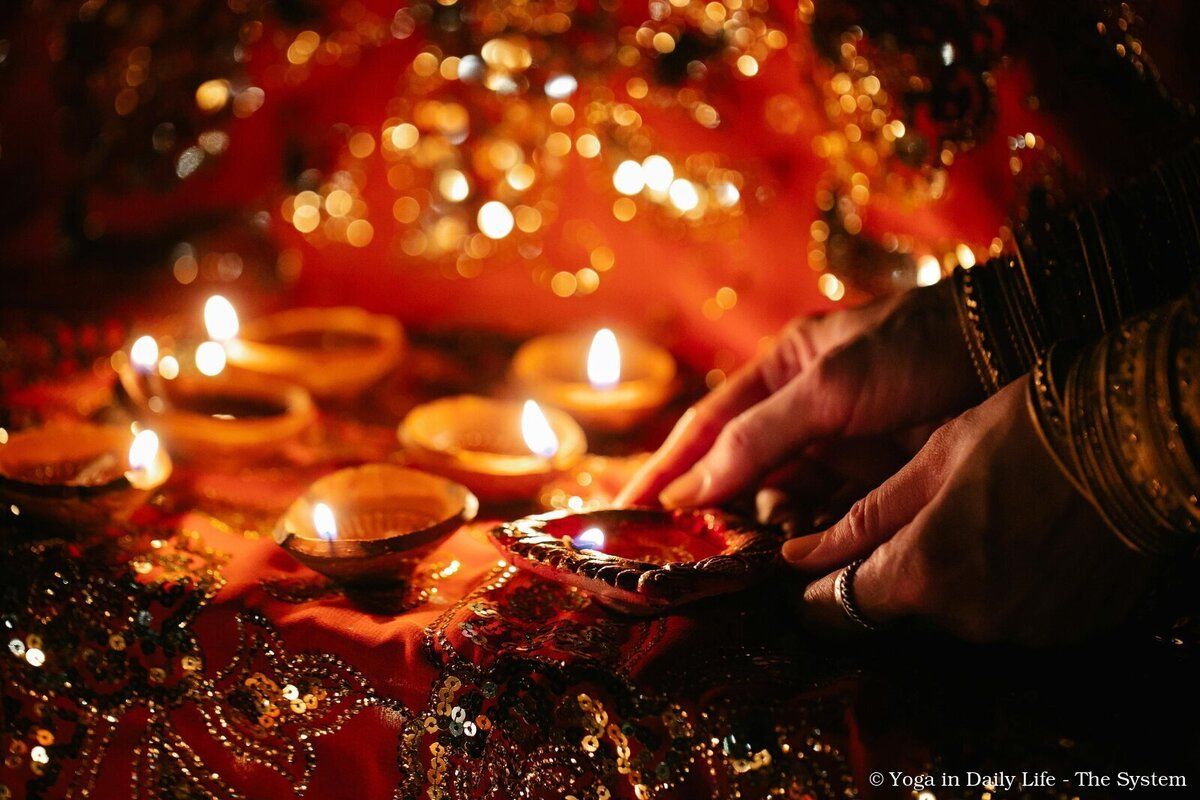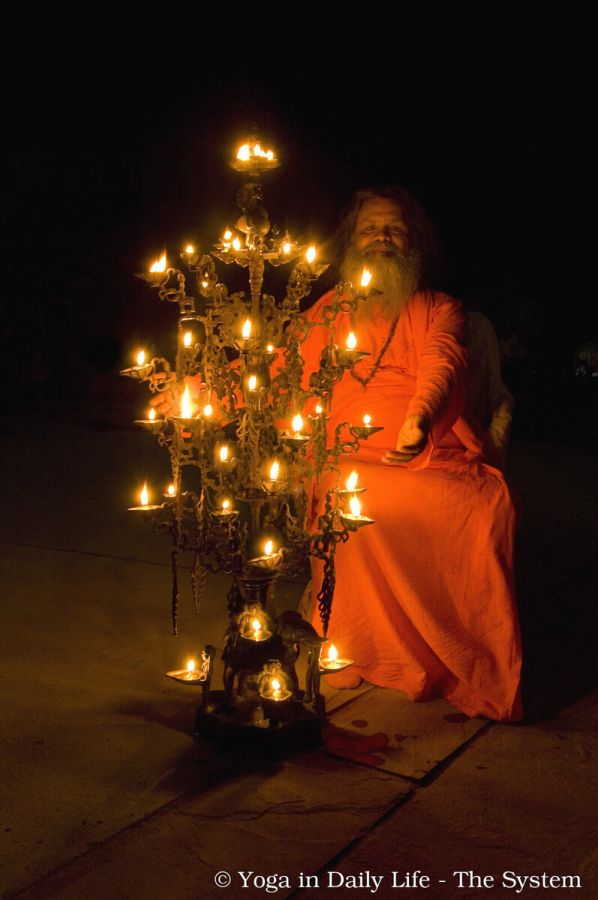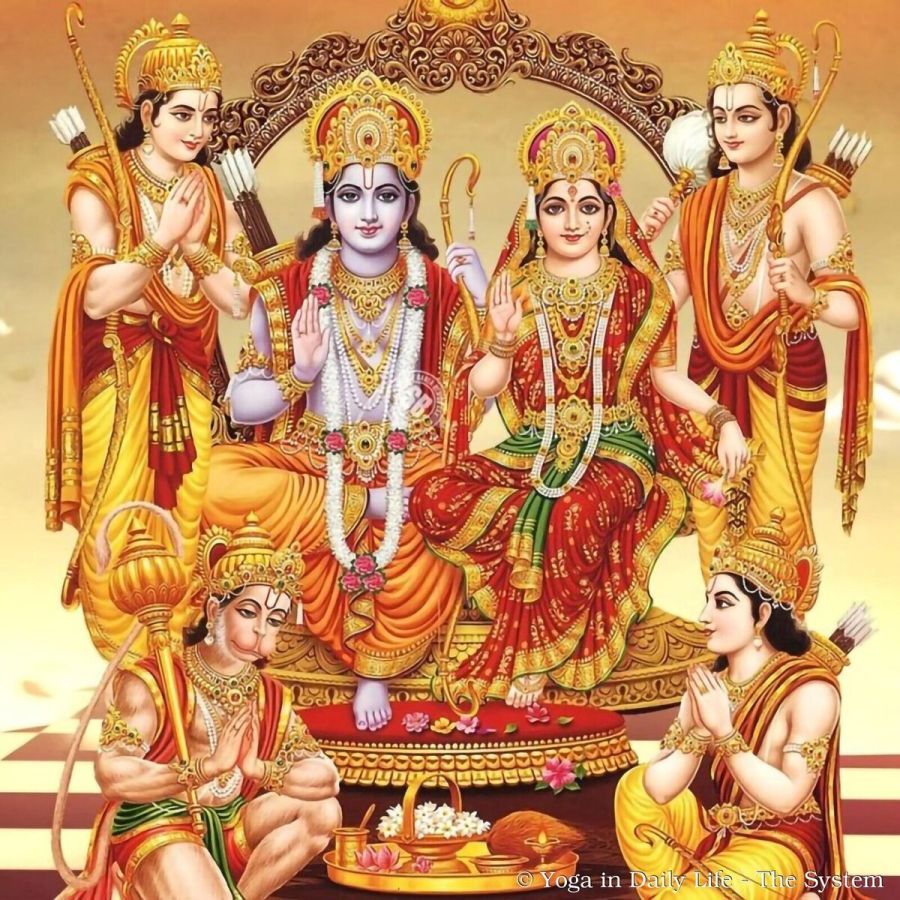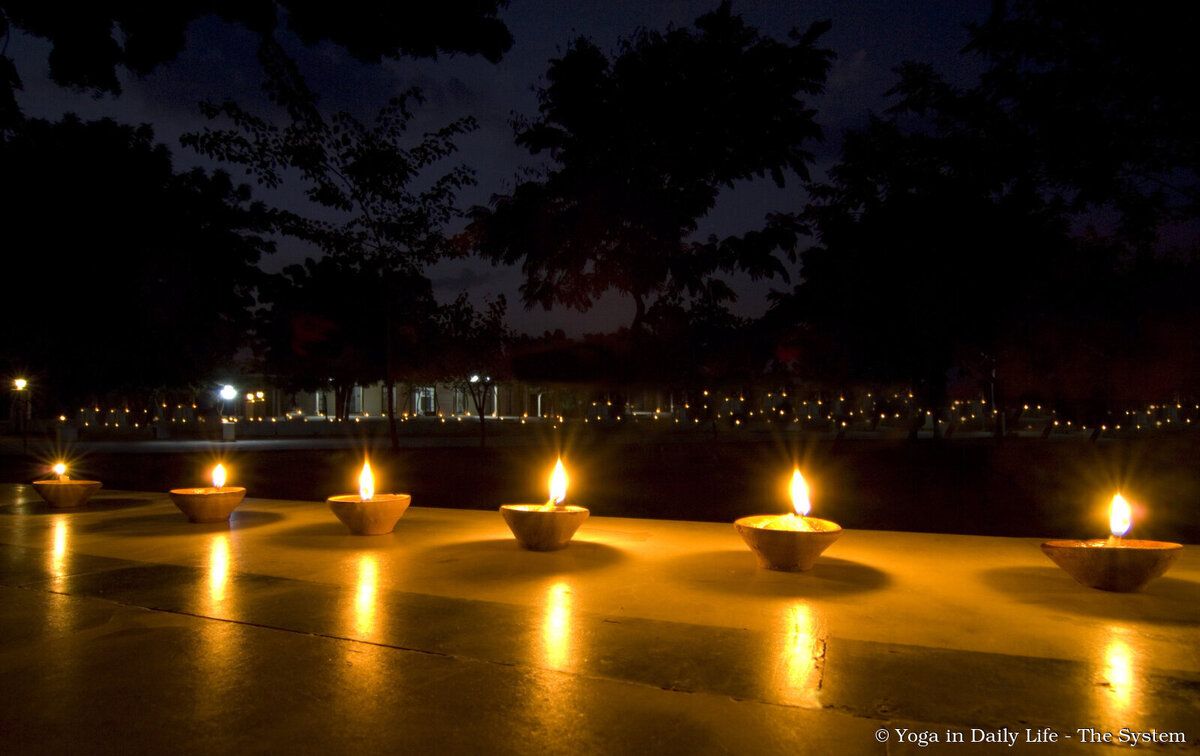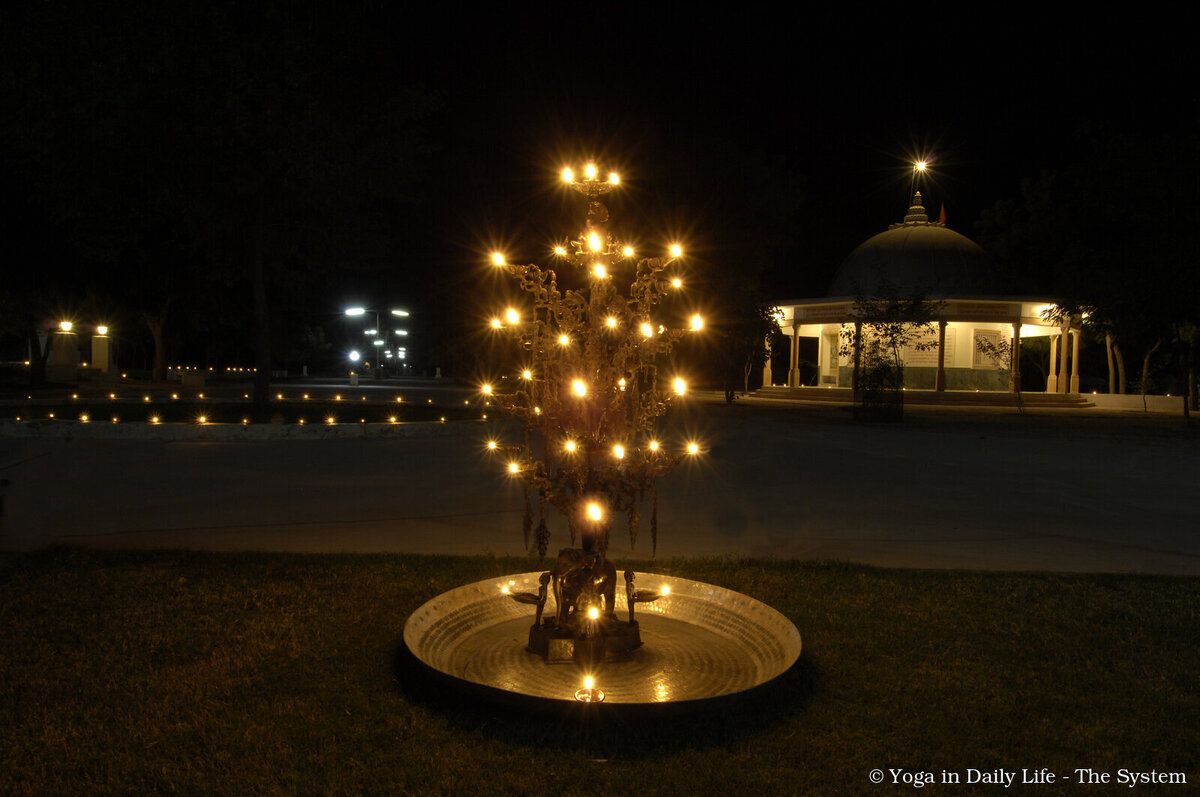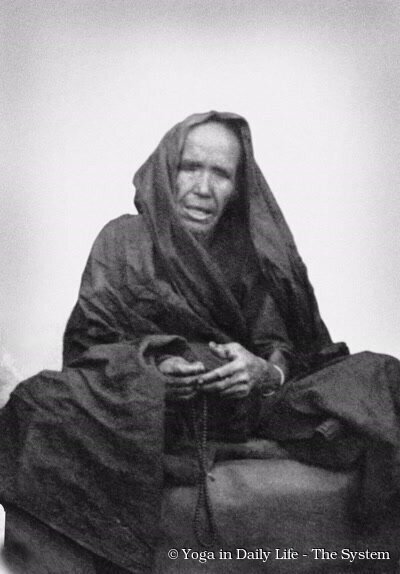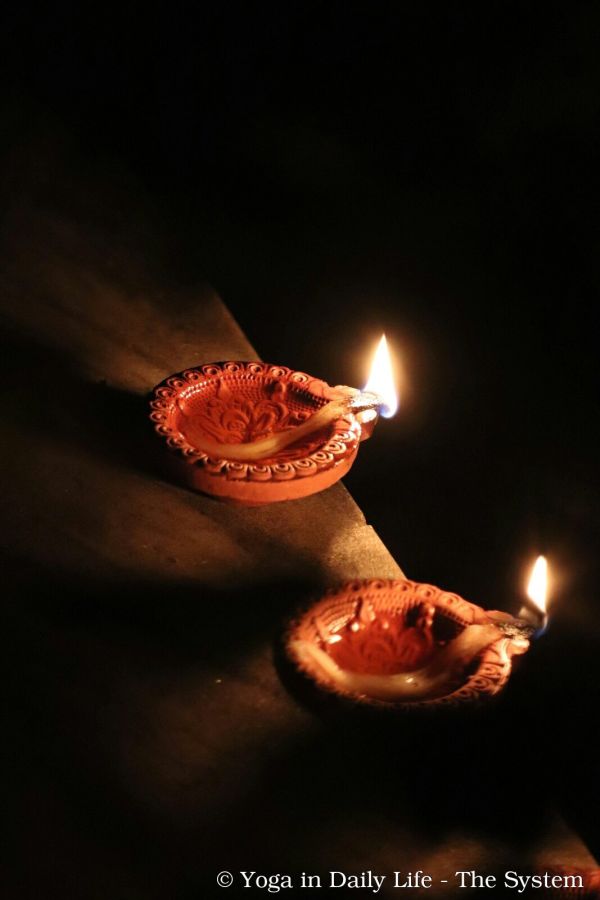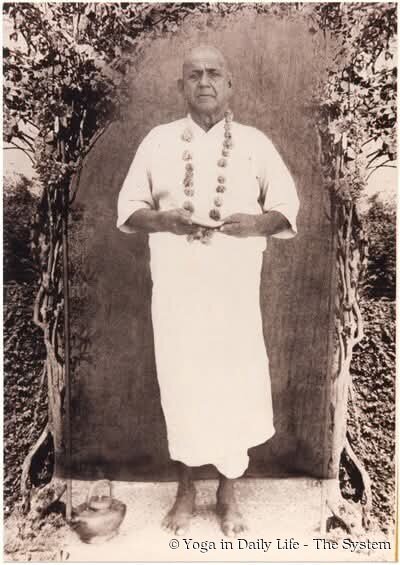Diwali: the victory of righteousness
Diwali, the Festival of Lights, is one of the most cherished celebrations in India and beyond. It signifies the triumph of light over darkness, righteousness over unrighteousness, and wisdom over ignorance. This year it takes place on 20-21 October 2025.
Traditionally, Diwali (or Deepavali) commemorates the joyous return of God Rama to Ayodhya after his victory over the demon king Ravana. The people welcomed him by lighting countless oil lamps (deepaks), symbolising the rekindling of dharma (righteousness) and light in the world.
On this same sacred night, centuries later, another divine event took place. Bhagwan Sri Deep Narayan Mahaprabhuji, Universal Light and protector of all beings, was born in Rajasthan at the holy hour of brahma muhurta on Diwali in 1828. His incarnation on Diwali is seen as a divine continuation of the eternal message of righteousness, compassion and spiritual illumination.
God Rama’s Story – The Eternal Victory of Dharma
Vishwaguru Paramhans Swami Maheshwarananda, Vishwaguruji, depicted Rama as an incarnation of God Vishnu:
"The Vedas describe twenty-three incarnations of Vishnu to date. Such divine manifestations occur when adharma (unrighteousness) overwhelms the world, and God descends to eradicate negativity, restore dharma, and rekindle spiritual light. Divine incarnations serve multifaceted purposes."
The story of God Rama begins in the ancient city of Ayodhya. He was the firstborn son of King Dasharatha, who had three queens, Kaushalya, Kaikeyi and Sumitrā. From an early age, Rama’s presence was marked by miracles. Along with his brothers, he was sent to a gurukul (a spiritual school), where they lived and studied under the guidance of their revered teacher, Rishi Vasishtha.
As a member of the royal and martial social class, he displayed his mettle as a great archer early on by defeating demons. Regarded as the most virtuous of the king’s sons, he was chosen as heir. However, Dasharatha owed a boon to Kaikeyi, so she requested that her son, Bharata, be crowned, and Rama be banished. Rama, the ever-obedient son, journeyed off to the forest, accompanied by his wife Sita and brother Lakshmana.
In the forest, the trio was approached by Shurpanakha, a female demon. When she offered herself to Rama, he refused her. She retreated to the island city of Lanka and told her brother, the demon king Ravana, about the incident. When he heard of Sita’s beauty, he decided to steal her. He tricked the wandering trio through disguises and abducted Sita.
As a forlorn Rama sought his wife, he encountered a kingdom of monkeys and enlisted the aid of Hanuman, their commander. With his and his monkey army's help, a bridge is built to Lanka. Then Rama killed Ravana. After the victorious battle, he was initially hesitant to reunite with his wife, as he suspected her of infidelity. But Sita proved her chastity when she walked through the fire. The trio returned to Ayodhya, where Rama was crowned king and then ruled a prosperous kingdom.
The people of Ayodhya welcomed their beloved Rama with joyous celebrations, cleaning and decorating their homes and streets. They lit lamps and decorated the entire city with flower garlands.
Spiritual Significance of Diwali
The heart of Diwali lies in the values of dharma, hope and renewal. The lighting of lamps represents knowledge dispelling ignorance, spiritual light overcoming darkness, and joy replacing sorrow.
Vishwaguruji explains that divine incarnations appear when unrighteousness overwhelms the world:
“God descends to eradicate negativity, restore dharma, and rekindle spiritual light.”
Diwali, therefore, calls all humanity to follow universal laws of morality and compassion, allowing people to live in harmony, prevent suffering and nurture happiness.
Birth of Bhagwan Sri Deep Narayan Mahaprabhuji on Diwali
On 8 November 1828, the auspicious day of Diwali, Bhagwan Sri Deep Narayan Mahaprabhuji incarnated in Rajasthan, India. As written about in the biography, Lila Amrit, his birth was accompanied by miracles: villagers witnessed oil lamps lighting themselves, blossoms falling from the sky, and a wave of inner joy filling their hearts.
Recognised by astrologers as a divine soul, the newborn was named Deep, meaning 'universal light'. From early childhood, Mahaprabhuji displayed wisdom, recited mantras, and inspired all with his presence. He became one of the great spiritual masters of the Sri Alakhpuriji Siddhapeeth Parampara, a lineage known today through Yoga in Daily Life.
Sri Mahaprabhuji spent his long life in rural Rajasthan, and he left his body consciously at the age of 135. He is considered the incarnation of love and wisdom. He devoted his life to service. He unconditionally helped many in need, people, animals and all beings. In his teachings, he emphasised that self-control, self-knowledge, and universal love are the paths to truth and enlightenment. He taught that God is love, and all living beings are God's children.
Diwali Today – A Festival of Light and Universal Love
Diwali reminds humanity that darkness never prevails forever; light always returns. God Rama’s victory over Ravana and Bhagwan Sri Deep Narayan Mahaprabhuji’s birth on this sacred night both embody the timeless truth of light, dharma, and universal love.
As lamps are lit in temples, homes and streets, Diwali continues to inspire spiritual renewal, compassion, forgiveness, and the victory of goodness in every heart, reminding us to let go of past wrongs and embrace one another with love.
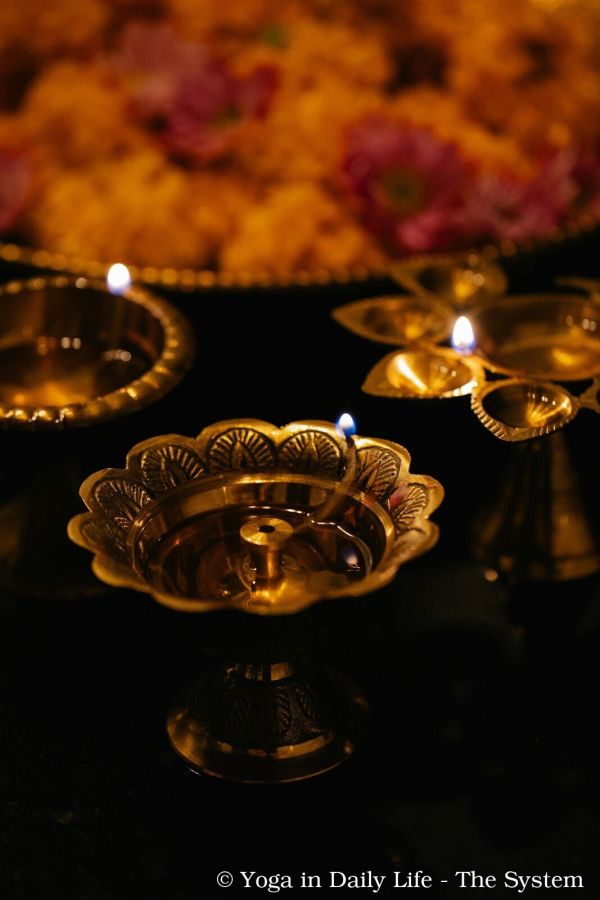
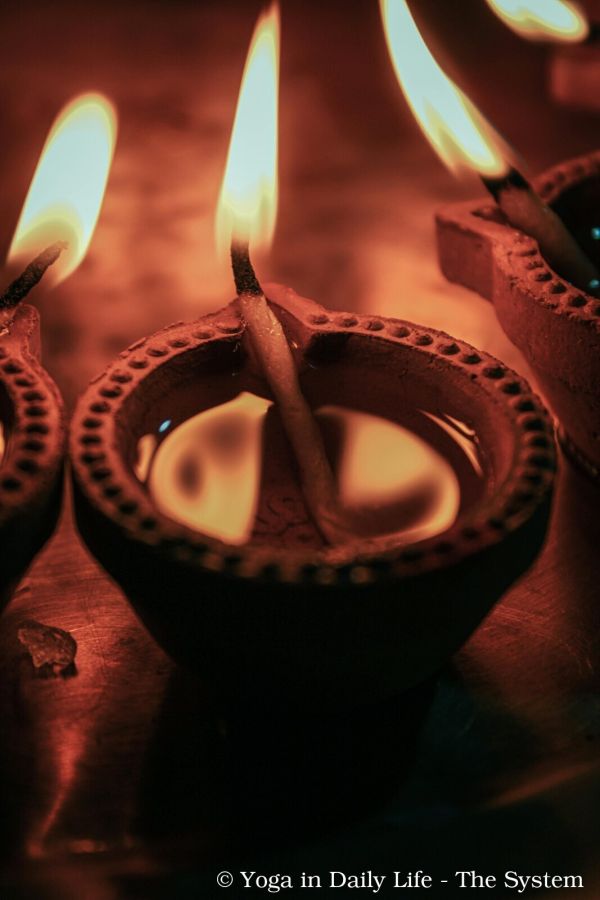
Listen to an inspiring Happy Diwali message from 2009 with Vishwaguruji on YouTube.
Written sources:
- What to know about Diwali, The Festival of Lights – by Harmeet Kaur
- The Story of Rama – by Britannica Encyclopedia
- Diwali Satsang: The Story of Lord Rāma and the Triumph of Light – by YIDL sources
- The Divine Journey of Rāma: A Diwali Narrative – by YIDL sources
- Lila Amrit - The Divine Life of Sri Mahaprabhuji – by Paramhans Swami Madhavanandaji
